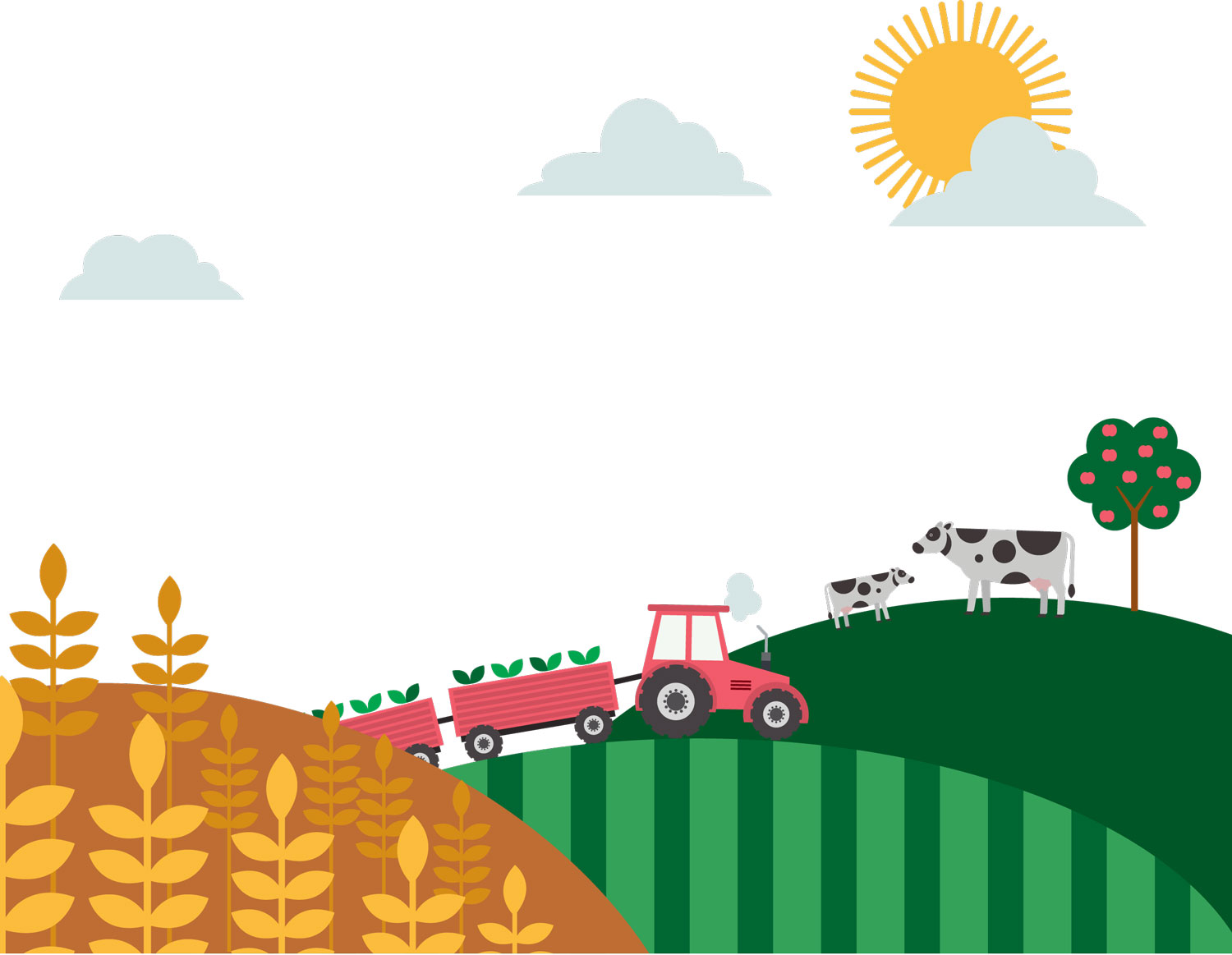Agri-Centric
You’ve heard of the “Department of Ag,” but do you know what it’s for—or what it does? It turns out the South Carolina Department of Agriculture cares about nearly everything on your homestead.
Take a glance at the FAQ sheet for the South Carolina Department of Agriculture, which includes a dozen seemingly unrelated headers. There’s the expected “Food Safety” and “Agritourism,” but then there are other titles too, some surprising and some pedantic. One link simply reads “Peaches.” Sure, the Dept of Ag gets a lot of inquiries about our state’s acclaimed crop, but what is “Metrology” and why is there a section under “Consumer Services” about how gas is regulated by an entity most of us would only connect with crops?
Welcome to a department under the direction of a small state. I find it assuring that the Department of Agriculture pounds the pavement, fields and shopping aisles of South Carolina to protect consumer rights and I’m here to say our tax dollars do stretch a good long way, something I witnessed while visiting the reaches of the Dept of Ag from its state farmers markets to its laboratories to its offices on the Capitol’s footprint. To be frank, I was surprised how much ground this commission covers and how diligent they are about oversight.
But, there are idiosyncrasies within this agency too, albeit pretty typical of state government as old as ours. For example, the labeling of beef falls under the Dept of Ag, but chicken inspection is the domain of Clemson University for no reason other than precedence. I’ve been on a mission to understand this conglomerate and break it down into terms we can all understand.
Hugh Weathers is our elected Commissioner of Agriculture and he appoints three assistant commissioners each term. Weathers is passionate about what is produced or regulated on his watch and he’s been in the role continuously for a dozen years.
The Dept of Ag falls into quadrants: agriculture services, consumer protections, general operation and external affairs. You drill down and learn that within these sectors are food and feed safety, grading and inspection, and what’s meant by “external affairs” is essentially economic development and legislation. Although it may not sound glamorous, this is all the fun stuff—including the Certified SC Grown program, Fresh on the Table and a new initiative called ROOTS aimed at featuring South Carolina farmers. Markets and farm stands fall under general operations and are often the retail face of the department.
Certified SC Grown is now 10 years old. Its goal was simply to celebrate the local product with branding that could be identified by the consumer. Today, more than 2,000 farmers and agribusinesses utilize it.
“I’m a farmer,” says Weathers, “and we don’t spend money unless we think we’ll have a return on our investment. Our research tells us that for every dollar we invest in the Certified SC Grown program, there is an $11 return back into the economy. 80% of consumers in South Carolina know what the brand means. We’re proud of that and the impact it’s had on segments of the South Carolina farming economy.”
But let’s back up a bit. By the numbers, South Carolina is home to 25,000+ farms on nearly 5 million acres of fields. Add in forestry and you’ve got what’s called “agribusiness.” That contributes $42B (that’s billion) to the state’s economy annually. In 2009, Weathers created a strategic initiative he named “50 by 20” to shine a light on agribusiness as a whole. His dream was for the sector to contribute $50B to South Carolina’s bottom line by the year 2020 (at the time it was $34B).
“Having a goal has galvanized the focus at the Department of Agriculture,” he says. Today, $50B feels easily achievable, but Weathers (much like his name) is a stalwart realist and not afraid of new aspirations. “If we accomplish the goal, we’ll probably stop for 30 minutes, celebrate and get back to work,” he says.
Agribusiness is the largest single industry in South Carolina (and livestock is our biggest commodity), but as urban centers continue to grow exponentially agritourism also continues to impact localities. Restaurants, for example, influence not only what diners want on the plate, but also what’s available at roadside stands and at area supermarkets. Gone are the days of solely industrial produce—major suppliers are being queried not where, but how far their foodstuffs are being grown or raised and that equates to an economic impact that is yet to be digested.
Most of us think of farmers and crops when we hear the word “agriculture,” but the 50+ employees that make up what’s called the Division of Consumer Services is a fascinating sector of the Department of Ag. This team checks product safety by inspecting feed, seed, produce and meat products in vast, state-of-the-art laboratories on their campus at the State Farmers Market complex in West Columbia.
Products plucked blindly off the shelf every week are tested here at this central location to identify unsafe, ineffective or fraudulent goods. Other labs assess pet food and animal feed, pesticide residue on produce (both fresh and frozen) and the accurate germination of packaged seed. Five full-time employees run the Seed Lab including a Certified Seed Analyst, one of only 81 in the nation. They grow and analyze grass seeds, vegetables, flowers, tobacco, cotton and nearly every grain, confirming the expectations offered on the label. The team evaluates a mind blowing 8,500-10,000 samples per year by hand.
“When I became commissioner, I was astounded—fascinated really—at what we do in our six laboratory operations around food safety, animal product safety and consumer product safety,” says Weathers. “The food regulatory environment is only going to increase, and our Department takes very seriously its responsibility to educate farmers and protect all five million South Carolinians.”
Other Dept of Ag teams test two things that may feel unrelated to Mother Nature: gas and scales. Yep, the reason Commissioner Weathers’ photo is plastered to every pump in the state is because the purity of gasoline is serious stuff to the Department. “We tell folks we’re the referees for their pocketbooks when it comes to anything purchased by weight,” says Weathers. “It’s our responsibility to verify on behalf of consumers that they are getting what they pay for.”
Twenty inspectors pull 64 samples a week at gas stations all over the state, bringing it back to the Petroleum Lab to be tested. They’re looking for water in gasoline and say it’s never added on purpose—most often rain water seeps into underground gas tanks. If found a pumping system can drain it off.
The Metrology Division at the state laboratory is a national standard for weights and measures, so much so that other states will send their equipment to be calibrated at this facility, but many days this team is inspecting deli scales or produce scales, scales at hardware stores and commercial truck scales. The department even has two weight carts balanced to transport 20,000 pounds over land by truck. They serve industrial clients too, who often send weights to be calibrated in newly built precision Echelon I labs.
Nearly everyone I met with Dept of Ag for this assignment knew pretty much by heart the mission of the agency and recited it in one form or another to me. For the record it’s to promote and nurture the growth and development of South Carolina’s agriculture industry and its related businesses while assuring the safety and security of the buying public. But, again and again these dedicated, delightfully nerdy and highly-educated professionals explained to me how they love the detailed work they do, the reporting and the care they take to ensure the products we buy in South Carolina, the equipment that measures it and the words it’s labeled with are, to the best of their ability, what ends up in our homes.
Could Hemp be SC’s New Cash Crop?
The Industrial Hemp Bill was passed last session and gave the Dept of Ag the responsibility of overseeing a pilot process to license just 20 growers, each limited to 20 acres each, tracked by GPS coordinate. Other requirements included a predetermined processor and a partnership with a South Carolina research university. Immediately they received 130 applications. Hemp has a low level of THC and no known psychotropic effect. The Department chose growers in different geographies, hoping to learn which type of soil hemp will thrive best in. There is a theory that, like tobacco, it will grow especially well in the Peedee. Legislation for year two of the program expands the number of growers to 40 and increases the max acreage to 40.
The SCDA is selecting 40 farmers to receive permits to grow industrial hemp for the second year of the pilot program. Applications are available at http://www.agriculture.sc.gov, due June 29.








